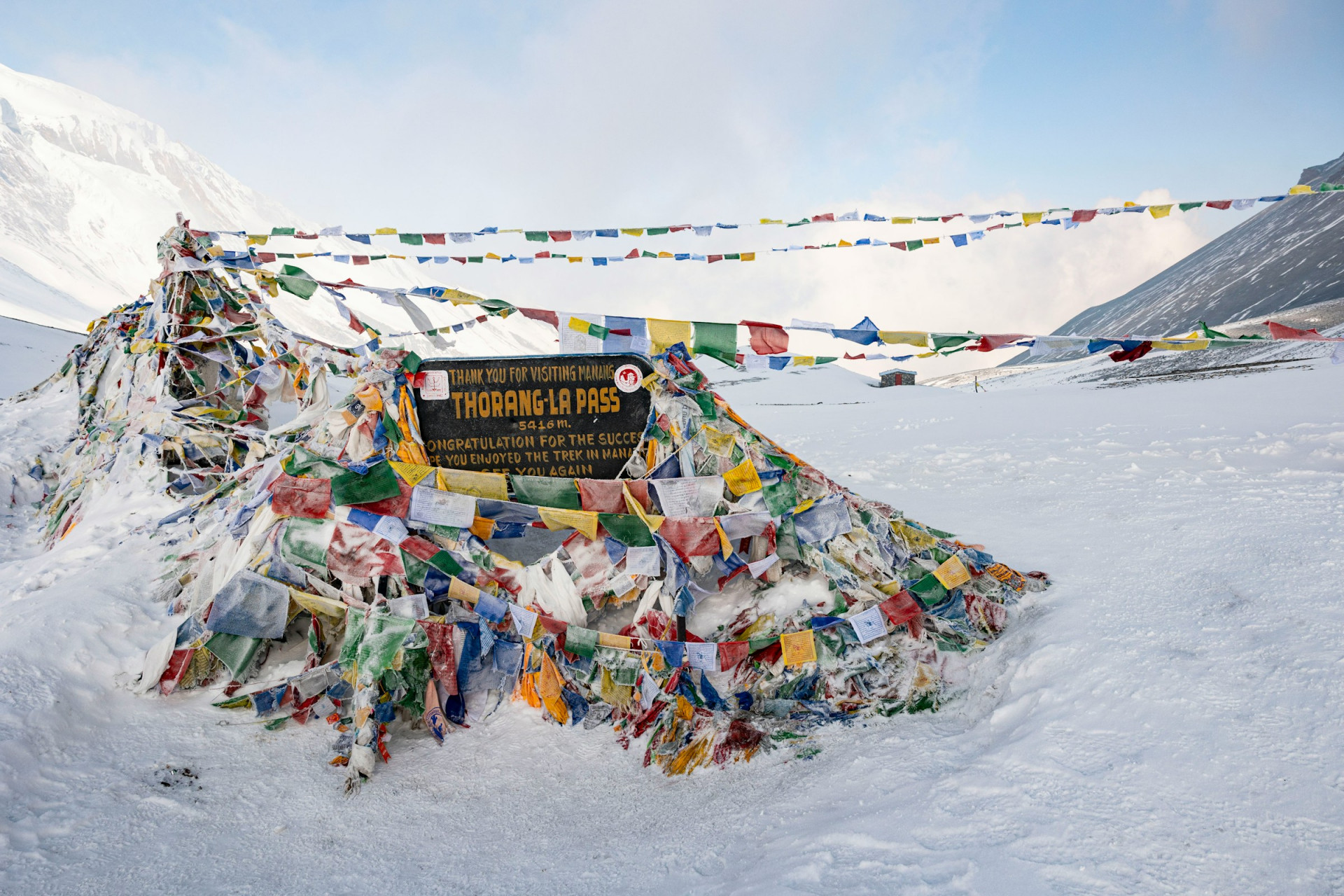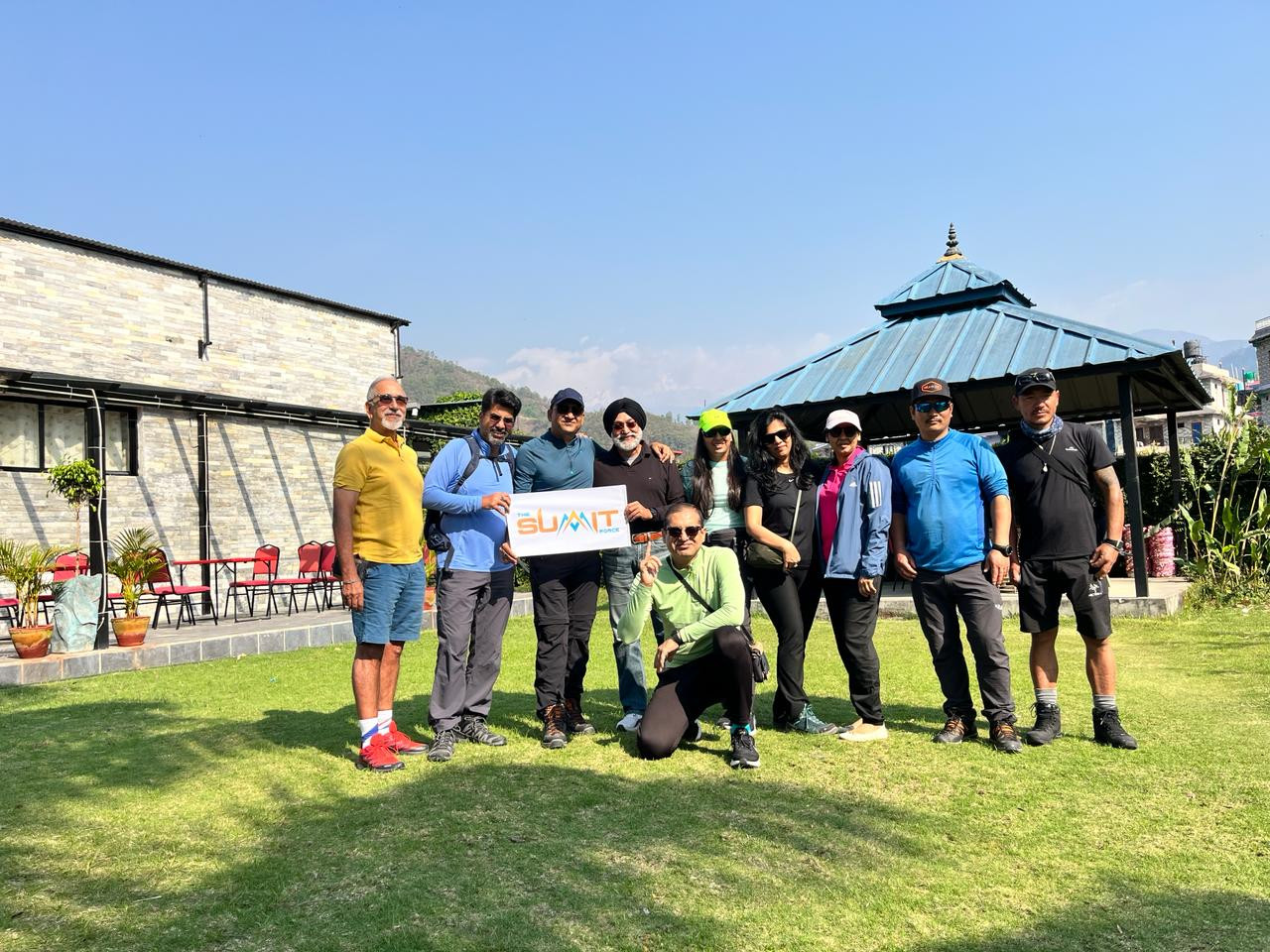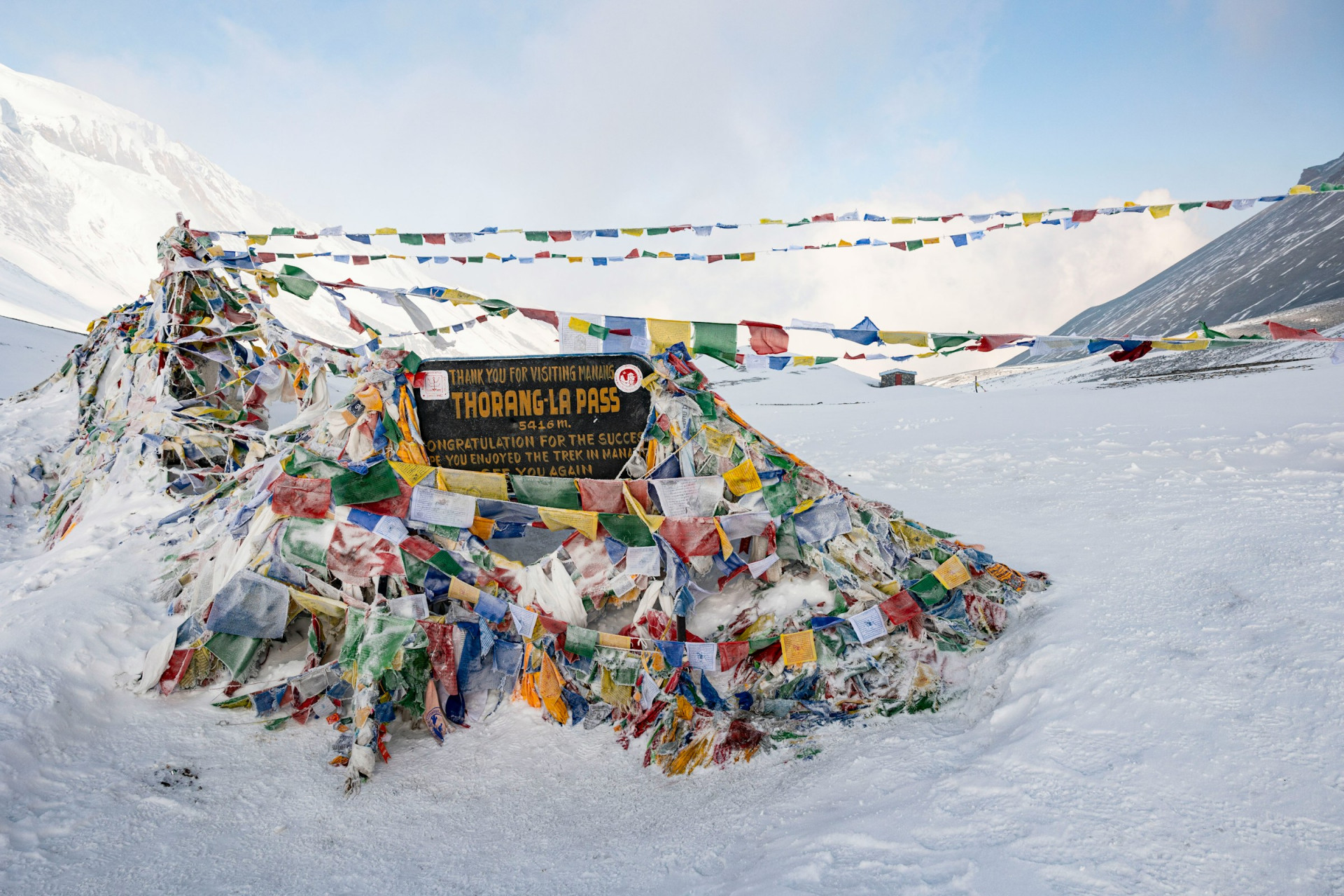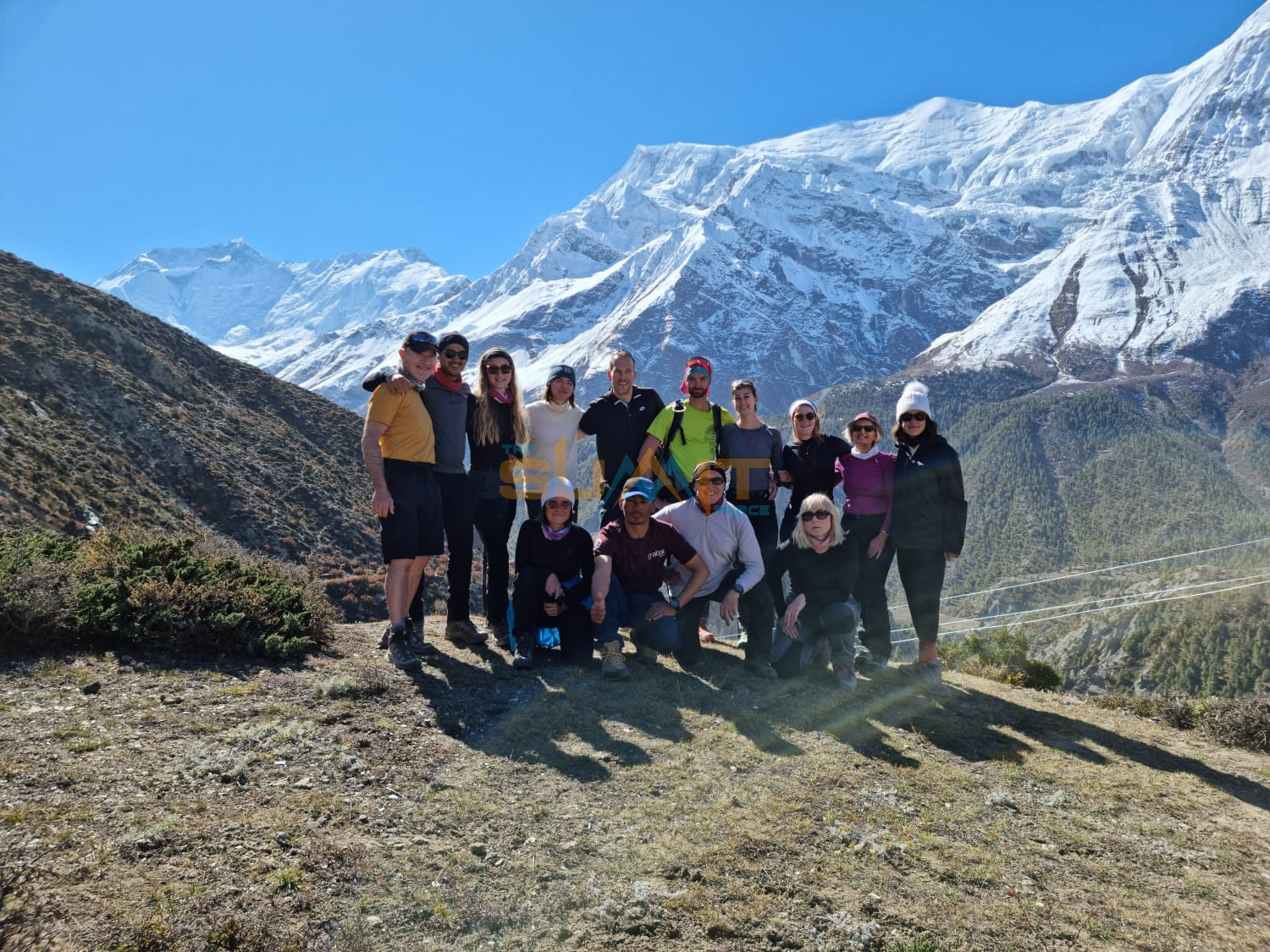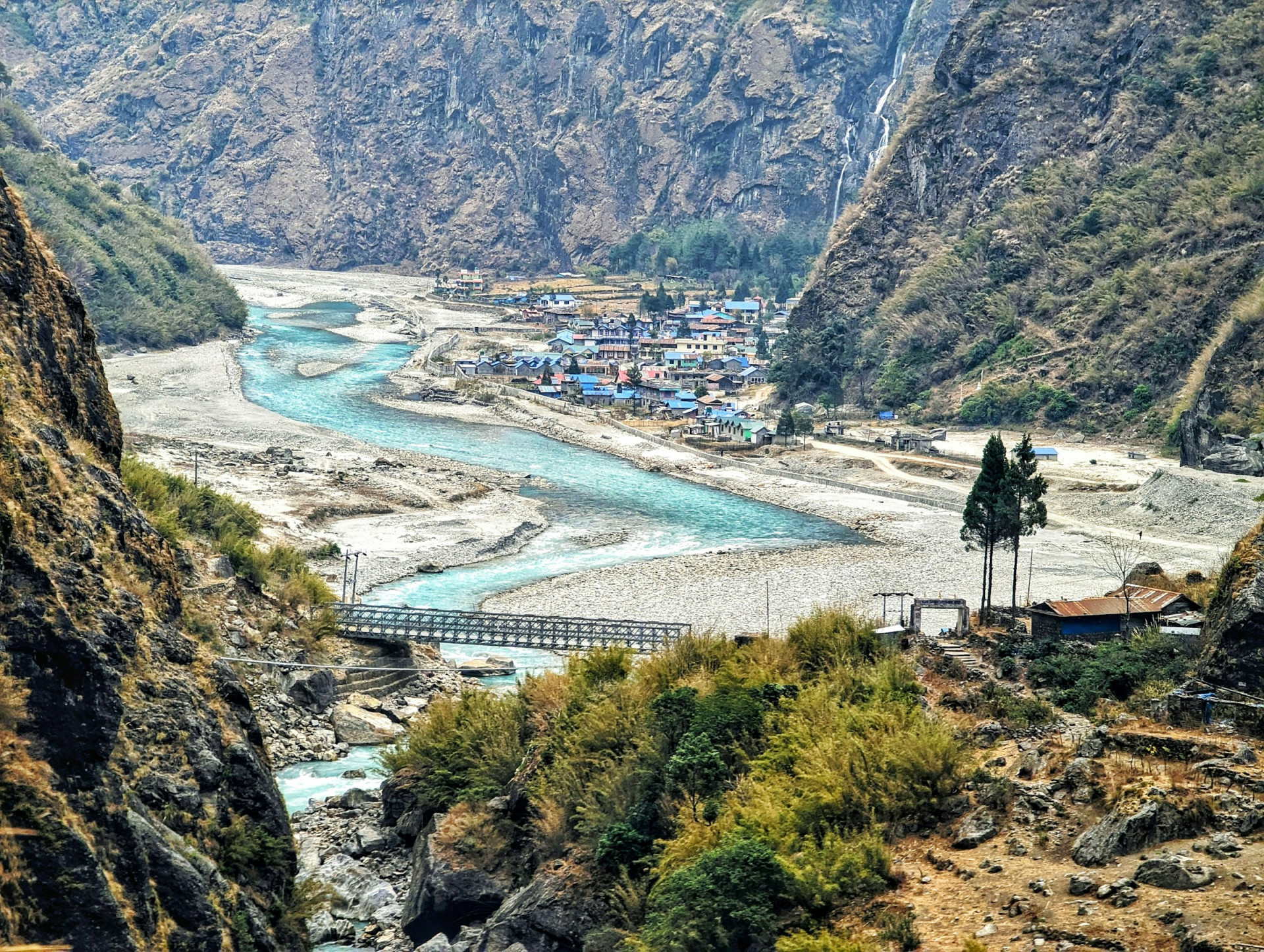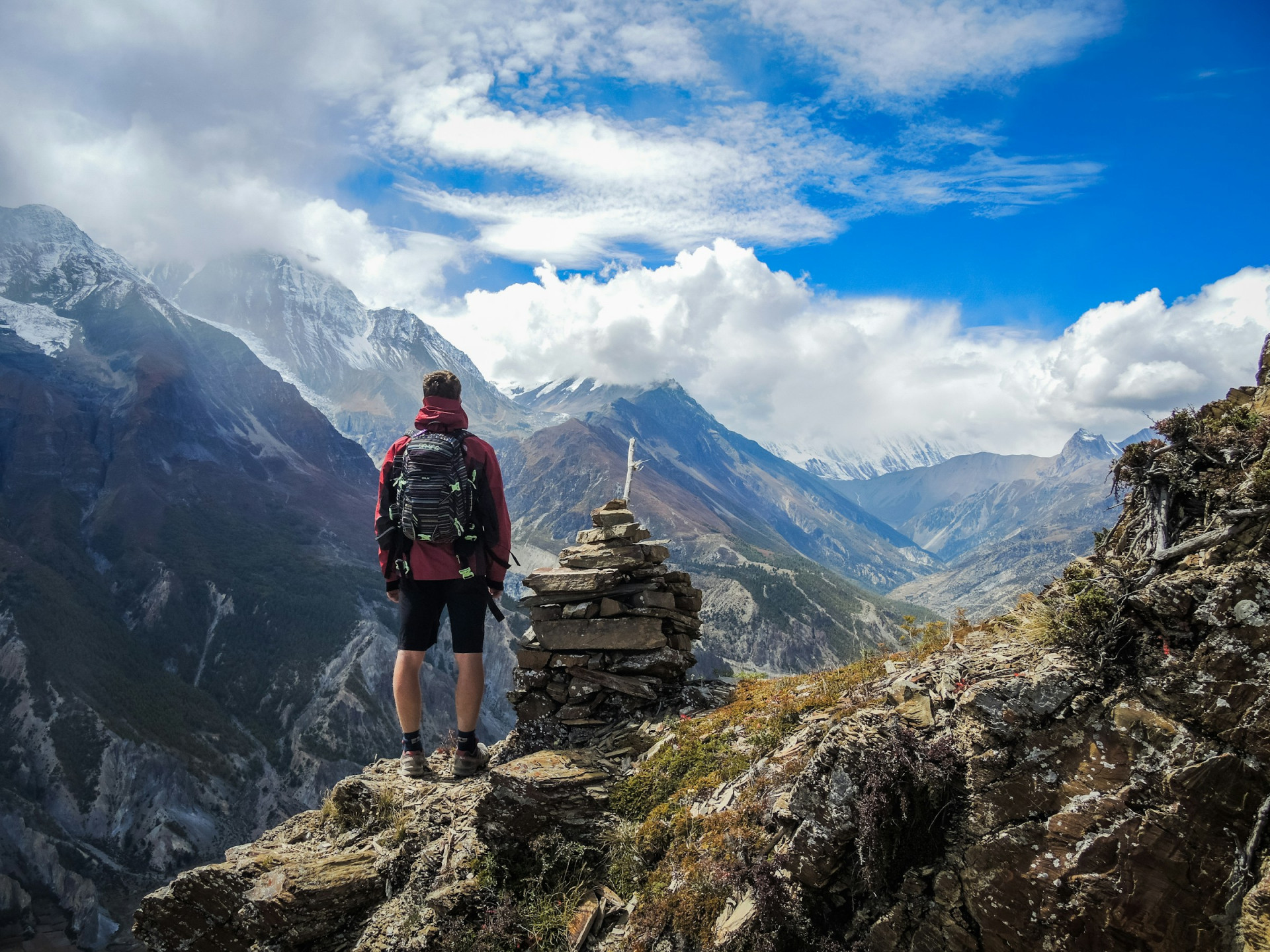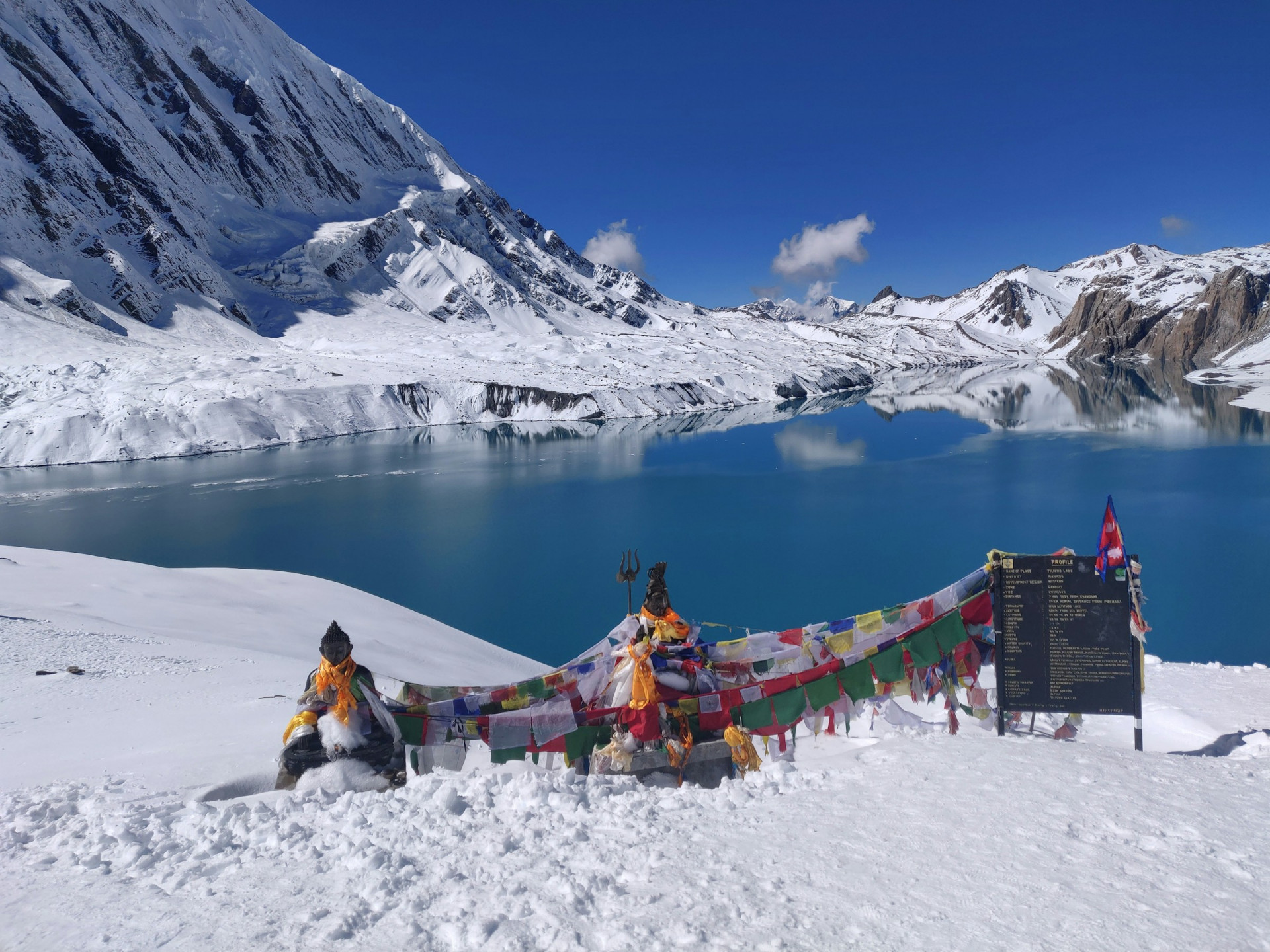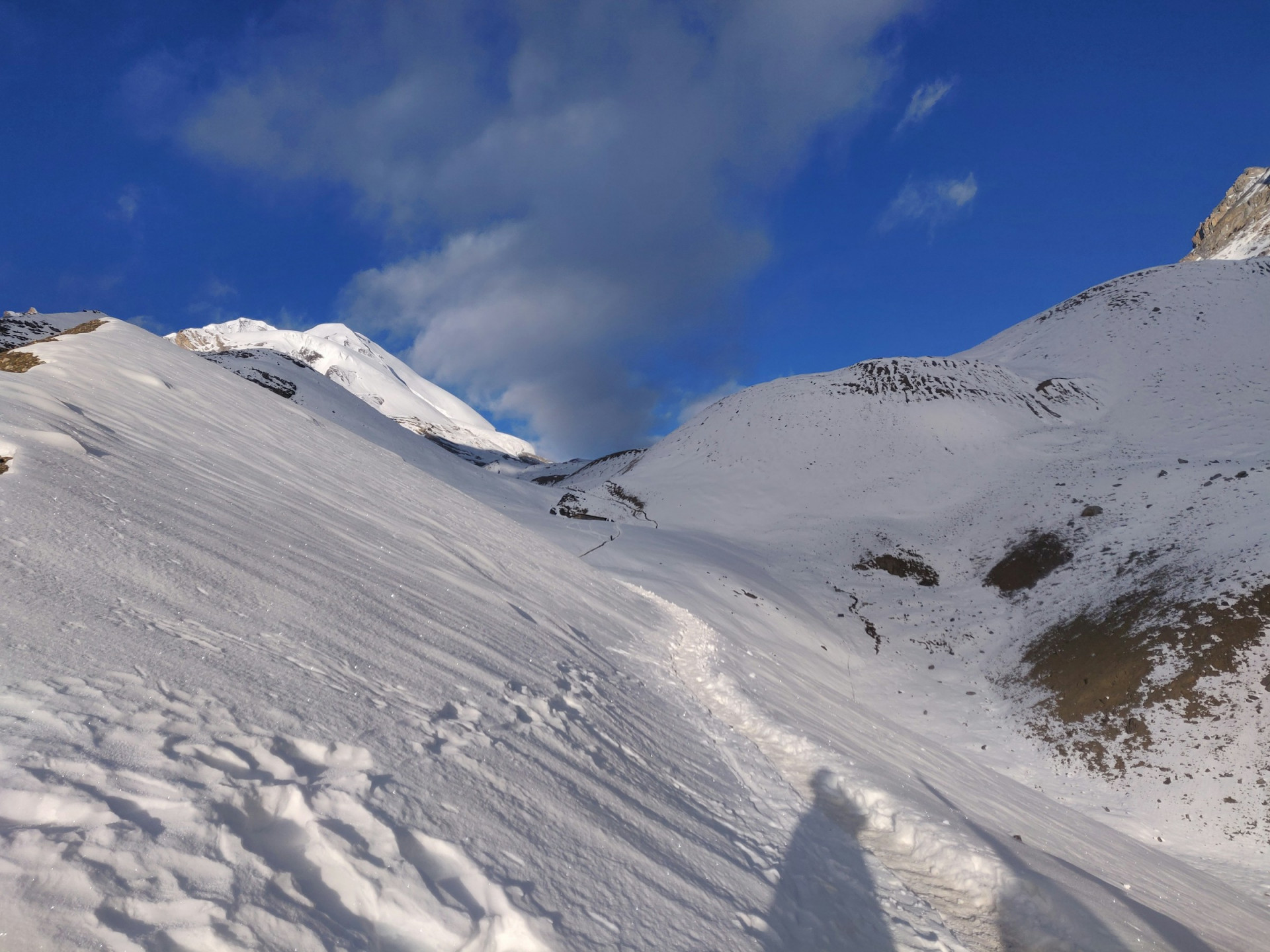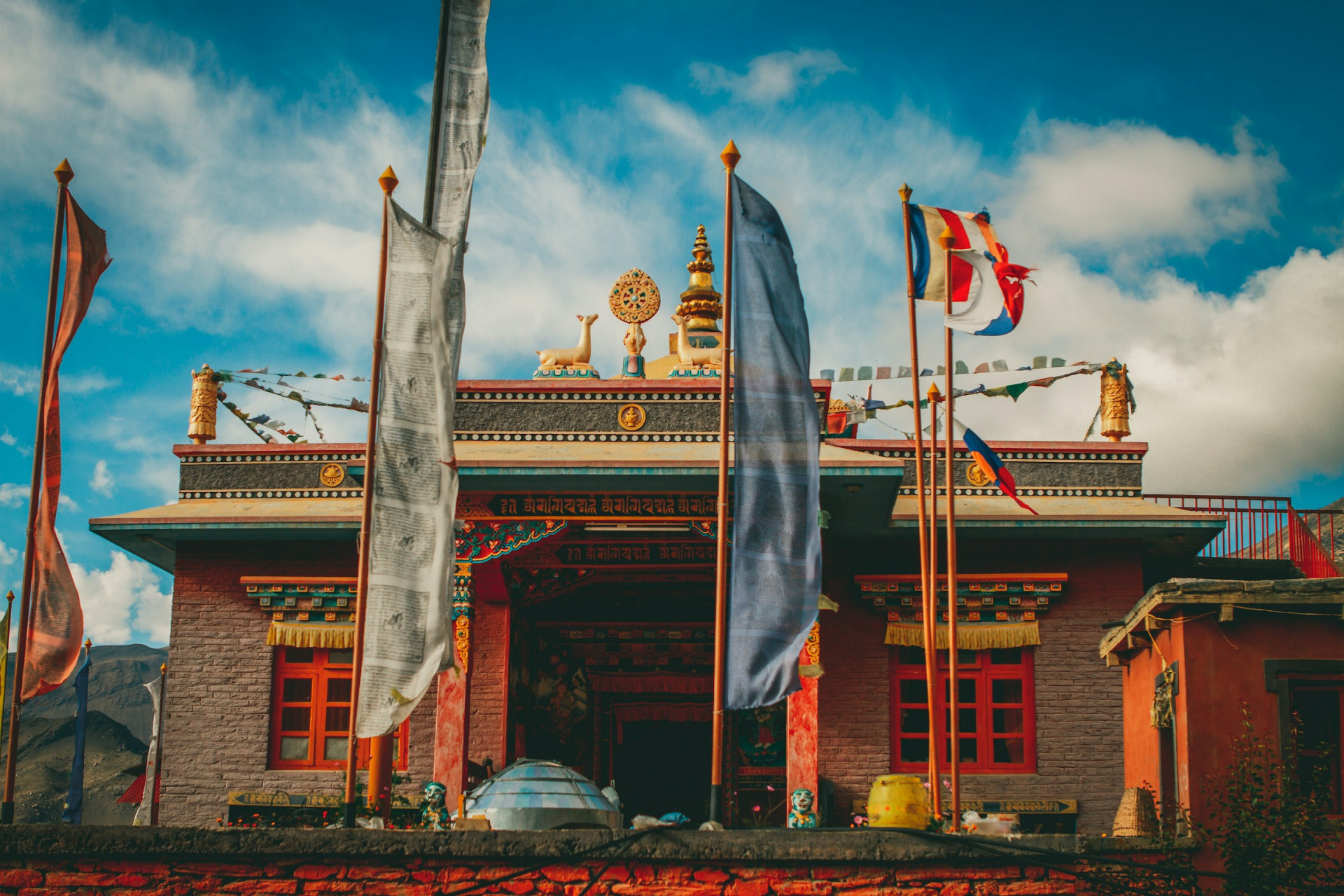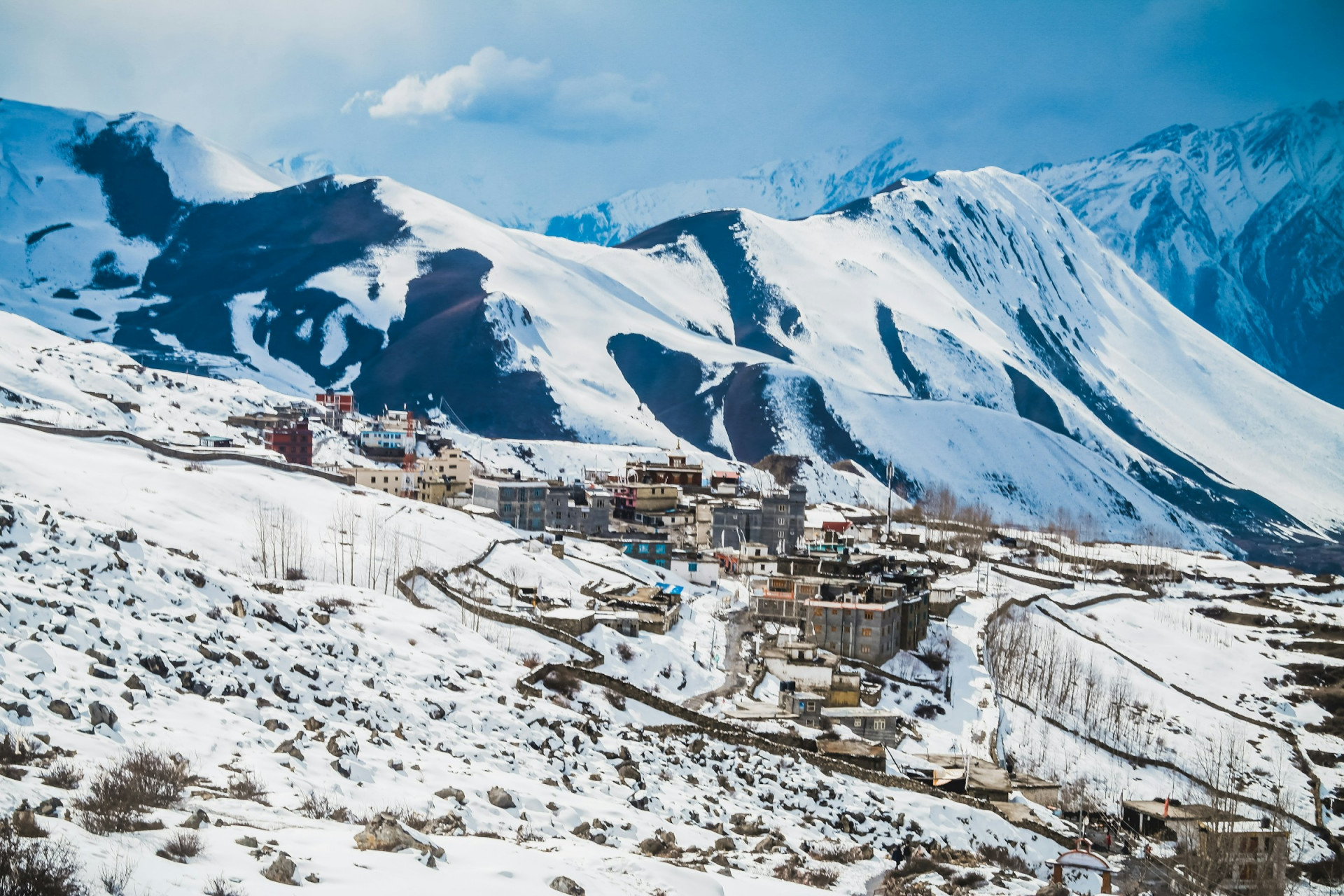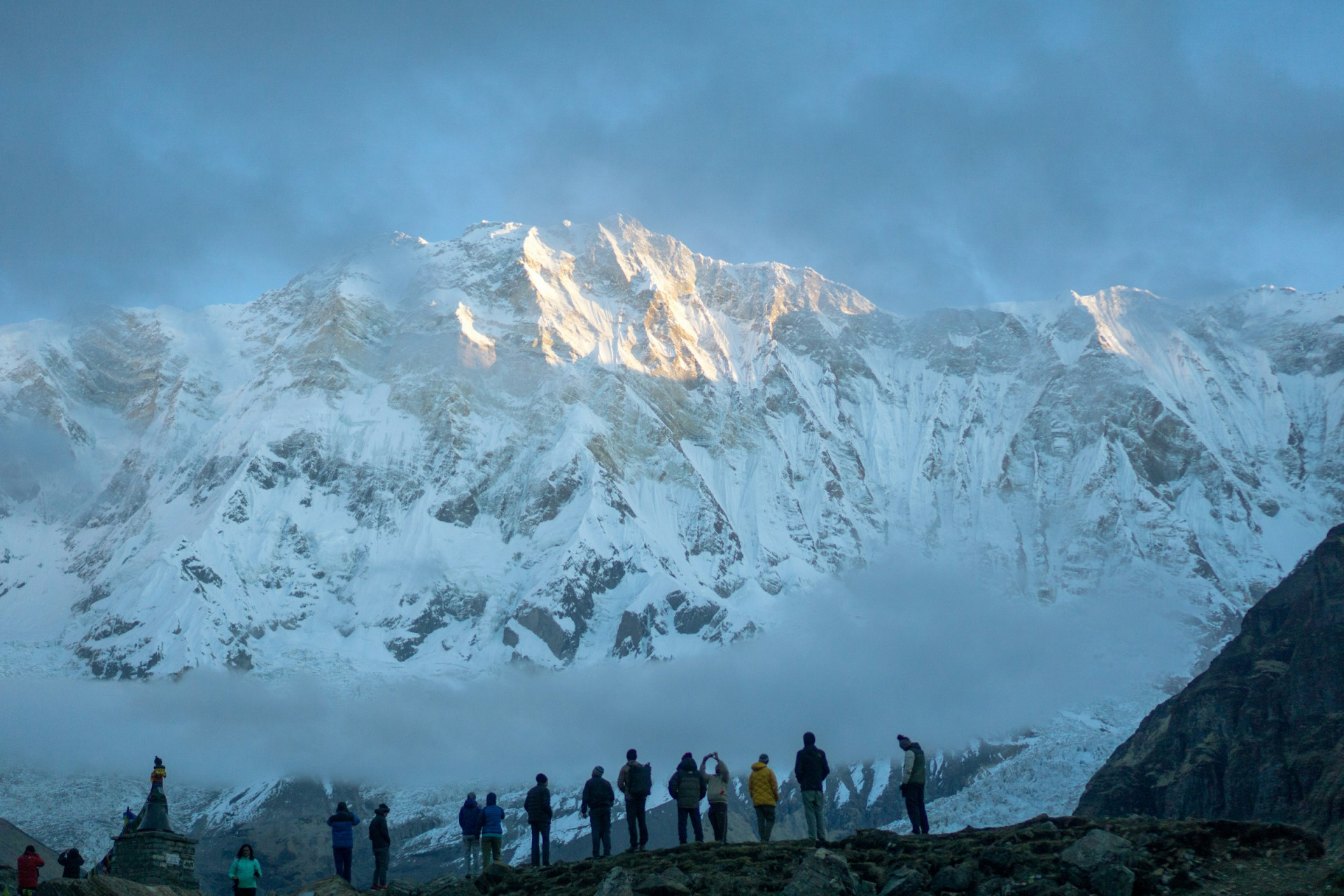Annapurna Circuit Trek is the most well-known and thrilling trekking trail in Nepal due to its stunning landscapes, ethnic villages, diverse cultural experiences and easy access from Kathmandu and Pokhara. In every aspect Annapurna Circuit Trek is easy going, gradual climbs and well- marked trails with frequent restaurants and lodges to take a break. The only challenging section of the trek is that you have to climb the Thorong La Pass (5,416 m) and the altitude after Manang. You will trek around the Annapurna Massif, a group of majestic peaks in the Himalayas. The trek usually takes around 13 to 15 days to complete, depending on your pace of walk and side trips.
The trek starts in Besisahar and follows the Marsyangdi River Valley, passing through lush forests, terraced fields, waterfalls, and charming villages. The scenery changes as you ascends higher altitude. You'll experience arid terrain in the Manang district and cross the challenging Thorong La Pass (5,416 meters / 17,769 feet) before descending into the Kali Gandaki Valley. While trekking, you'll encounter spectacular mountain views of Annapurna I (8,091 meters / 26,545 feet), Dhaulagiri (8,167 meters / 26,795 feet), Machhapuchhre (6,993 meters / 22,943 feet), and other peaks. You'll also pass through culturally rich villages like Pisang, Manang, and Marpha, where you can experience the local culture and hospitality.The trek offers a range of accommodation options, including tea houses and lodges, which provide basic amenities such as a bed, blankets, and meals. Remember that the facilities become more basic as you go higher in altitude.
The best time for the Annapurna Circuit trek is during the pre-monsoon (spring) and post-monsoon (autumn) seasons, which are from March to May and September to November, respectively. During these periods, the weather is relatively stable, and the views are usually clearer. The trek involves significant altitude gain, so every trekker must acclimatize properly while trekking to avoid altitude sickness. Take rest days in higher-altitude villages like Manang to let your body adjust to the thinner air. The Annapurna Circuit trek is considered challenging, so having a good level of physical fitness and prior hiking experience will be beneficial. Trekking in the Himalayas is an incredible adventure, but being well-prepared ensures a safe and enjoyable experience.
Trip Highlights
Diverse Landscapes: The trek covers a wide range of terrains, from lush subtropical forests and terraced fields to alpine landscapes and arid deserts, showcasing Nepal's incredible natural diversity.
Thorong La Pass: At 5,416 meters, crossing this pass is the highest point of the trek and a major achievement for trekkers. The views of the surrounding peaks are breathtaking.
Cultural Immersion: The trail passes through various villages inhabited by different ethnic groups, including Gurung, Thakali, and Manangis. This allows trekkers to experience Nepal's rich cultural heritage, including monasteries, temples, and traditional homes.
Hot Springs in Tatopani: A well-deserved rest stop, the hot springs in Tatopani are perfect for soothing tired muscles after days of trekking.
Muktinath Temple: A sacred pilgrimage site for both Hindus and Buddhists, Muktinath offers spiritual significance and stunning views of the surrounding mountains.
Marpha Village: Known for its apple orchards and delicious apple products like brandy and pie, Marpha is a charming village with whitewashed buildings and narrow stone-paved streets.
Annapurna and Dhaulagiri Ranges: Throughout the trek, trekkers are treated to panoramic views of these majestic mountain ranges, including peaks like Annapurna I, Annapurna South, and Machapuchare.
Kali Gandaki Gorge: Trekking through the world’s deepest gorge, flanked by the Annapurna and Dhaulagiri ranges, is a thrilling experience.
Tilicho Lake: An optional side trip, Tilicho Lake is one of the highest lakes in the world at 4,919 meters. The turquoise waters against the rugged landscape are mesmerizing.

